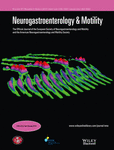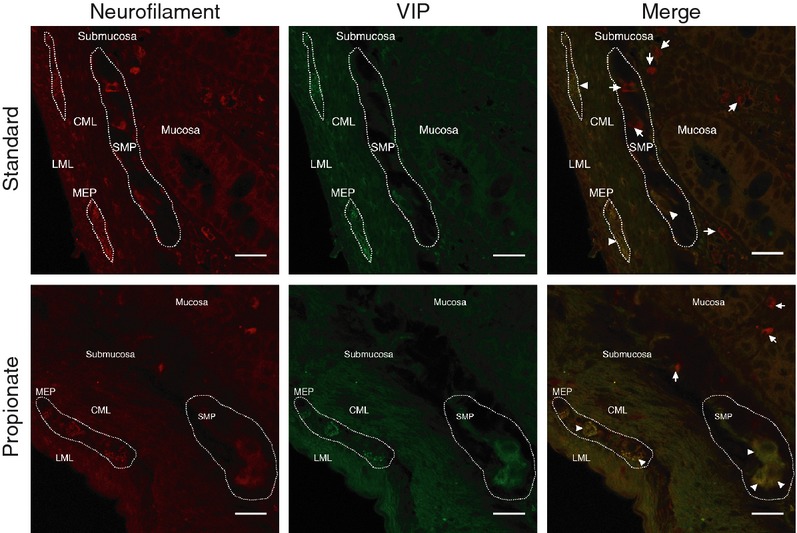Journal list menu
Export Citations
Issue Information
Announcement
MINI-REVIEW
Changing views on diverticular disease: impact of aging, obesity, diet, and microbiota
- Pages: 305-312
- First Published: 20 February 2015

Diverticulosis alone is mostly asymptomatic. Risk factors for the development of symptomatic disease include high animal fat, low fiber diets, obesity, and smoking. These are all factors which distinguish rural from urban industrialized populations who are at greatest risk of developing this condition.
REVIEW ARTICLES
The potential role of behavioral therapies in the management of centrally mediated abdominal pain
- Pages: 313-323
- First Published: 27 November 2014

The fear avoidance model of pain is the preferred construct in examination of centrally-mediated abdominal pain conditions. The pain experience is divided between a sensory-discriminative (or the sensation of pain) and motivational-affective component (the perception of pain). Fear is a natural consequence of the motivational-affective dimension, but the way fear is managed will drive prognostic outcomes. Patients who confront their pain with the assistance of therapies will likely recover, while those who avoid the fear experience will exacerbate the disease process through maladaptive behaviors.
EMERGING TREATMENTS IN NEUROGASTROENTEROLOGY
Emerging treatments in Neurogastroenterology: relamorelin: a novel gastrocolokinetic synthetic ghrelin agonist
- Pages: 324-332
- First Published: 29 December 2014

Synthetic ghrelin agonists, predominantly small molecules, are being developed as prokinetic agents that may prove useful in the treatment of GI motility disorders. Relamorelin (RM-131) is a pentapeptide synthetic ghrelin analog that activates the growth hormone secretagogue (GHS)-1a (also called the ghrelin) receptor with approximately sixfold greater potency than natural ghrelin. In this review, we discuss the pharmacokinetics, pharmacodynamics, and potential indications for relamorelin. This new ghrelin analog shows great promise to relieve patients with upper or lower GI motility disorders.
ORIGINAL ARTICLES
Constipation is not associated with colonic diverticula: a multicenter study in Japan
- Pages: 333-338
- First Published: 03 December 2014
Duodenal rather than antral motility contractile parameters correlate with symptom severity in gastroparesis patients
- Pages: 339-346
- First Published: 17 December 2014

Wireless motility capsule testing was used to simultaneously assess gastric and duodenal contractile motility in gastroparesis patients. Gastroparesis symptom severity was assessed using a validated questionnaire. Duodenal—rather than gastric—contractile motility correlated with symptom severity in Gastroparesis patients in two independent cohorts.
Concurrent psychological stress and infectious colitis is key to sustaining enhanced peripheral sensory signaling
- Pages: 347-355
- First Published: 17 December 2014

View the podcast on this paper at the following sites:
Youtube: https://www.youtube.com/watch?v=v-svSBQYCMs
iTunes: https://itunes.apple.com/gb/podcast/neurogastroenterology-motility/id965772477
Chronic stress and infectious colitis combine in an additive manner to heighten and prolong the sensitivity of visceral nociceptors. The effect relies on temporal coincidence of stress and infection, does not involve substantial exacerbation of inflammation, and may involve combined direct stress hormone and immune signaling on DRG neurons.
Gastric emptying scintigraphy results in children are affected by age, anthropometric factors, and study duration
- Pages: 356-362
- First Published: 04 January 2015

We determined the effect of age, anthropometrics, and study duration on gastric emptying as measured by 4 h gastric emptying scintigraphy (GES) in 188 children in a retrospective study. In those children who ate all of the meal, younger age and lower weight, height, and body surface area were associated with slower gastric emptying. The differences were magnified by increasing duration of the GES.
Intestinal gas homeostasis: disposal pathways
- Pages: 363-369
- First Published: 04 January 2015

Our aim was to compare the proportion of the gas produced by colonic fermentation that is evacuated per anus vs that absorbed into the blood and/or metabolized by gas-consuming microorganisms. In 20 healthy subjects, gas evacuated per anus was collected for 4 h after a flatulogenic test meal either without (basal conditions) or with high-rate infusion of exogenous gas labeled with a gaseous marker into the jejunum to wash-out of the gut the gas produced by bacterial fermentation. Without wash-out, only 23 ± 3% of the gas produced reached the anus, indicating that intestinal gas homeostasis is a highly dynamic process by which a large proportion is rapidly eliminated via alternative pathways.
Quality of life one year post-Shiga toxin-producing Escherichia coli O104 infection – A prospective cohort study
- Pages: 370-378
- First Published: 11 January 2015
Colonic motor abnormalities in slow transit constipation defined by high resolution, fibre-optic manometry
- Pages: 379-388
- First Published: 03 January 2015

Utilizing fiber-optic, high resolution colonic manometry, in patients with slow transit constipation, we have defined the colonic motor abnormalities in response to a high calorie meal. We propose a hypothesis that a possible neuropathy in the extrinsic parasympathetic inputs to the colon of patients with slow transit constipation may exist.
Digestive, cognitive and hedonic responses to a meal
- Pages: 389-396
- First Published: 03 January 2015
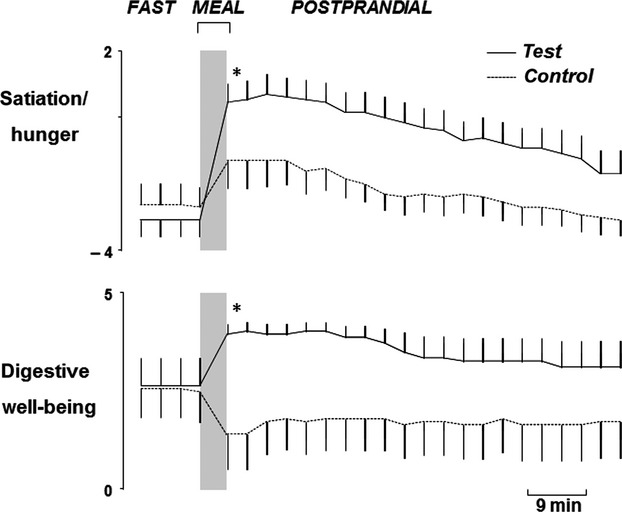
Gut dysfunctions may be associated to digestive symptoms, but we hypothesized that the gut can also originate pleasant sensations. In healthy subjects, (n = 42) we measured the digestive (gastric accommodation), cognitive response (conscious sensations) and the hedonic component to a meal (240 mL broth or water as control). The results indicate that when appropriate conditions are met, the response to a meal includes a hedonic dimension involving pleasant sensation of digestive well-being.
Association between health-related quality of life and symptoms in patients with chronic constipation: an integrated analysis of three phase 3 trials of prucalopride
- Pages: 397-405
- First Published: 11 January 2015
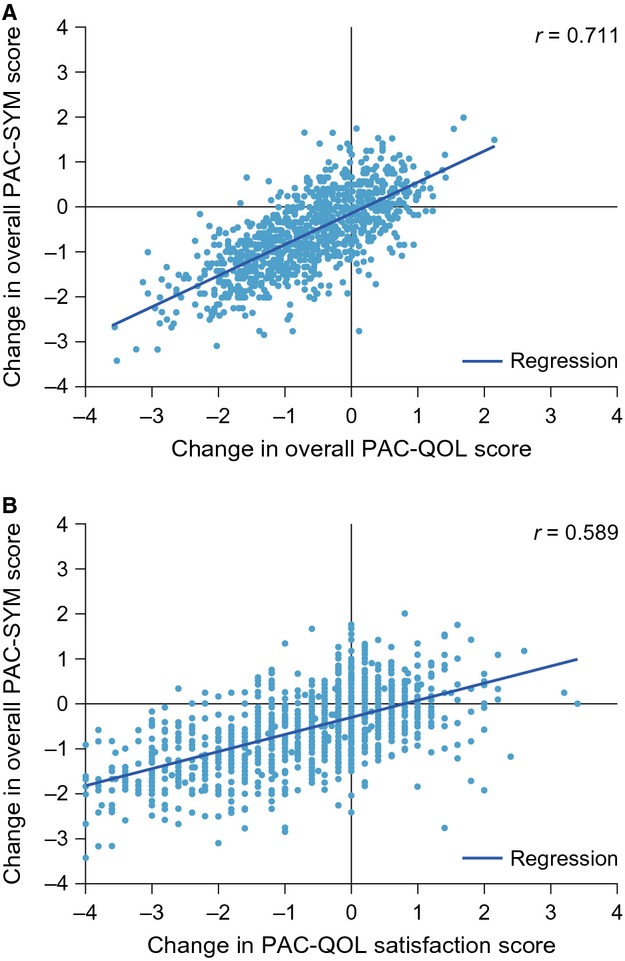
This was an integrated analysis of data from three pivotal multicenter, double-blind, randomized, placebo-controlled, parallel-group trials or prucalopride in patients with chronic constipation. The data from the three trials were pooled, and correlations were assessed for the change from baseline in PAC-QOL overall and satisfaction subscale scores compared with PAC-SYM scores. There was a strong correlation (r = 0.710) between improvement in PAC-SYM and improvement in PAC-QOL scores. PAC-SYM scores also correlated well with the PAC-QOL satisfaction subscale (r = 0.589).
Hyperglycemia-induced small intestinal dysrhythmias attributed to sympathovagal imbalance in normal and diabetic rats
- Pages: 406-415
- First Published: 28 January 2015
Symptom-association probability between meal ingestion and abdominal pain in patients with irritable bowel syndrome. Does somatization play a role?
- Pages: 416-422
- First Published: 11 January 2015

Patients with IBS often claim that meal ingestion worsens abdominal pain. The findings of this study demonstrate that these two variables are significantly (p < 0.05) associated in 45% of patients. Somatization is a frequent and clinically relevant psychological alteration in patients with IBS. The results of this study confirm that the syndrome is more severe in patients with altered somatization, whose quality of life is impaired. However, somatization does not influence the association between meal ingestion and abdominal pain.
Autonomic nervous system dysregulation in irritable bowel syndrome
- Pages: 423-430
- First Published: 11 January 2015
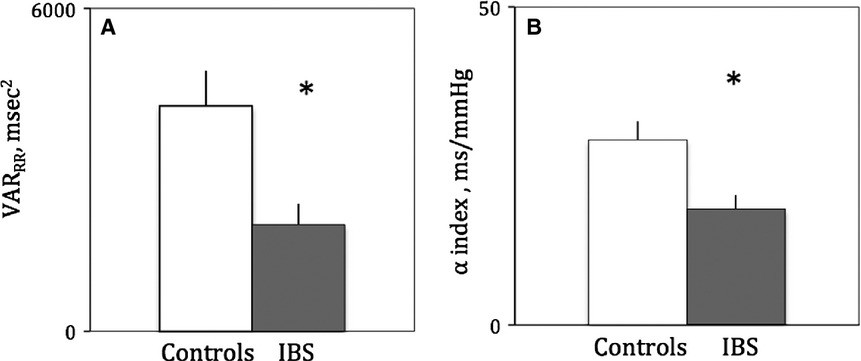
Autonomic nervous system (ANS) regulation is altered in patients with irritable bowel syndrome (IBS). The goal of the study was to assess ANS profile and its correlation with somatic perception in patients with IBS. We measured ANS function in 41 IBS patients and 42 healthy controls by means of a user-friendly and indirect non-invasive approach. IBS is associated with marked impairment of vagal regulation indices coupled to elevated subjective stress. Autonomic imbalance may have a role in the pathogenesis of IBS and its assessment may open new perspectives in clinical management of patients.
Weak peristalsis with large breaks in chronic cough: association with poor esophageal clearance
- Pages: 431-442
- First Published: 27 January 2015

Gastroesophageal reflux plays an important role in chronic cough. This study shows that one-third of patients with chronic cough exhibit weak peristalsis with large breaks and that this esophageal motor disorder directly relates to poor bolus clearance of refluxate and swallowed liquids. These observations may have important implications for esophageal-bronchial interaction and suggest that modulation of motility may be of more value than acid suppression in these patients.
HOT TOPIC
Vasoactive intestinal peptide is a local mediator in a gut-brain neural axis activating intestinal gluconeogenesis
- Pages: 443-448
- First Published: 13 January 2015




